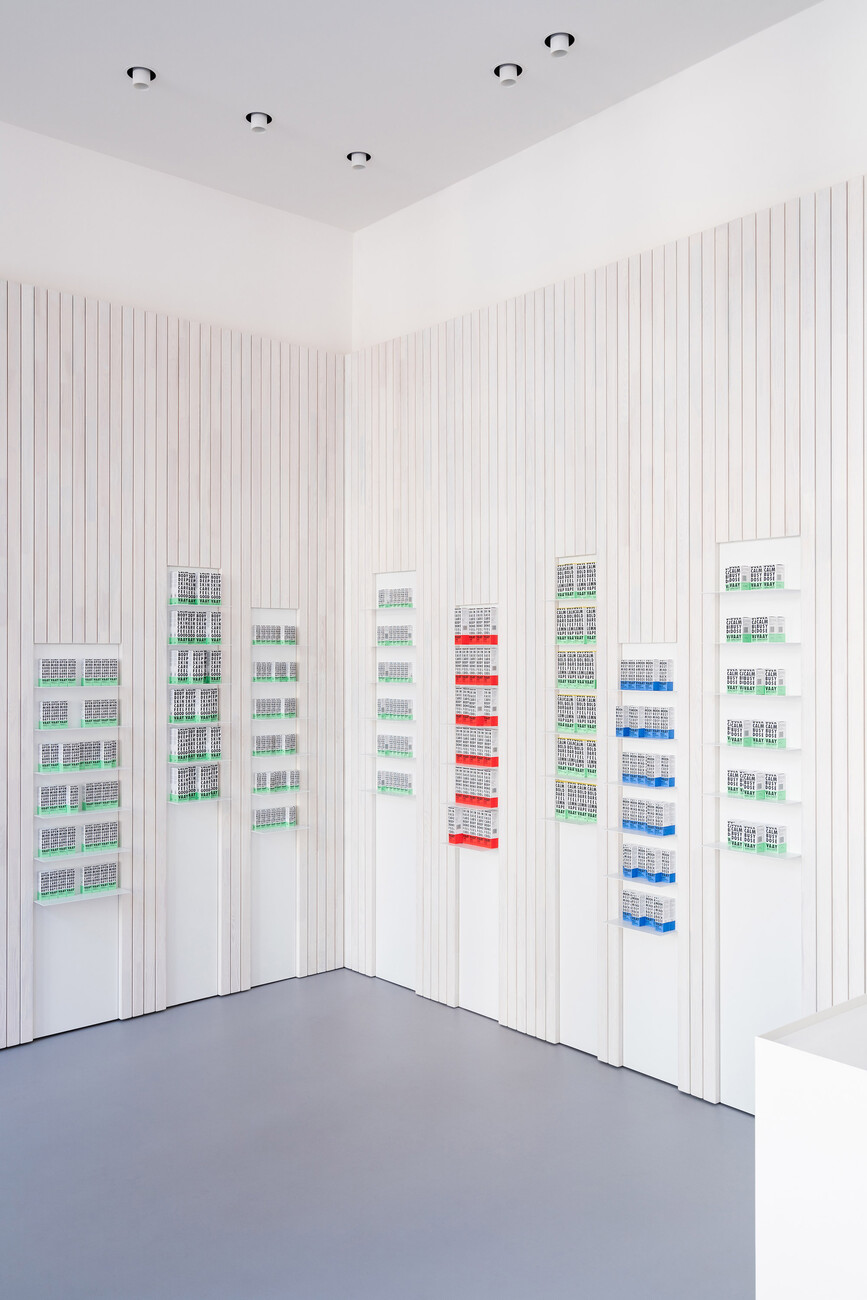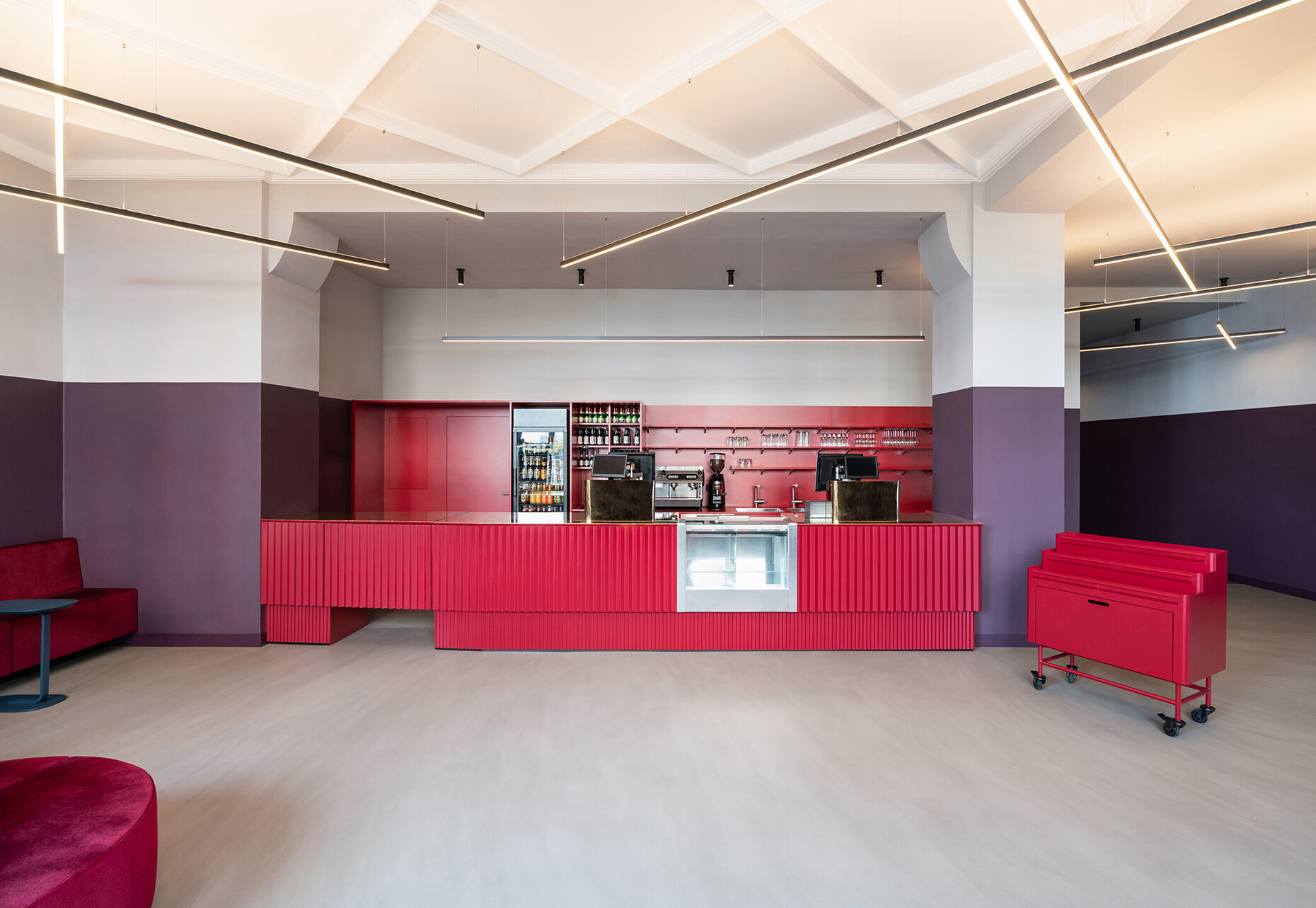Create better places
Linda Pezzei: Mr Batek, you not only do planning for private clients, but also for "brands" such as the star chef Tim Raue, the fashion group Zalando, Red Bull or the digital agency Razorfish - how does your approach differ in each case?
Patrick Batek: Basically, our approach is similar - we work closely with the company as well as the private client to understand the individual needs and fulfil the wishes and requirements for the project. When we design for a company, our concept naturally takes the CI into account; after all, the result should express and embody the brand. You can see this very well in our designs for the VAAY brand, for example, for which we set up both a pop-up store and the flagship store in Berlin. The aim was to create a framework for the brand with just a few well-placed elements, so the simple fixtures take a back seat to VAAY's graphically strong CI with its pop-coloured packaging and put it centre stage. With private clients, communication is usually reduced to one person or one couple and you can take a little more time.
Do these clients come to Batek Architekten precisely because of your architectural language or do they bring their own CI with them, which then has to be built upon?
Patrick Batek: I think it's a mixture of both. Clients certainly become aware of us because of our architectural language, which is characterised by our feeling for materials, colours and light as well as our approach. Therefore, they often refer to existing projects. However, every client is unique and comes to us with individual wishes or their own CI or brand, to which we adapt our design - we see ourselves as a service provider.
You specialise in the extension and conversion of projects at historical sites and in buildings with an eventful history - what particularly appeals to you about this theme?
Patrick Batek: Respect for the existing space and its character is our fundamental principle. The expansion and conversion of projects in historical locations offers completely different framework conditions in which you have to operate. This can be seen as an obstacle, but we see it as a welcome challenge. It leads to exciting designs and new ideas that might otherwise not even be considered: from building materials to spatial concepts.
What opportunities do old building fabrics offer that new construction may lack? And what are the challenges?
Patrick Batek: Existing buildings have a certain patina and history that give the project character. With completely newly built projects, you have to make sure that a certain soul or warmth is created. In addition, the ecological aspect of recycling old substance is becoming more and more relevant. Examining existing materials and recycling them where necessary as well as building and renovating for the long term makes more sense than always relying on new products and buildings.
What role does materiality play in your planning in this context?
Patrick Batek: We have a great passion for unadulterated, valuable materials and materiality plays a major role in our office. So the relationship to the building fabric is also enormously important and we develop existing buildings sensitively and with a lot of respect for what is already there.
You often work with strong colours - how do you develop your colour concepts and do you think clients sometimes need (more) courage?
Patrick Batek: The theme of colour is essential to our architectural language. Our colour concepts often stem from the CI, but in the further development we then rely on our distinct feeling for colours and our intuition. If we can't justify the colour choice, I see that as a good sign.
Is there a project that has particularly stayed in your memory - e.g. because it was particularly challenging in its implementation or because the end result was perhaps different than expected?
Patrick Batek: The GU29 project, a private house on the island of Sylt, has remained in my memory for a long time because almost all the conditions were different from other projects. A very old building fabric with strict requirements, an island, a different design approach, two strong clients sharing a property ... And complete supervision of the project was required - right down to the entire furnishing from tableware, cooking utensils, bed linen, towels to the furnishing with vintage furniture that we had to find.
Can you tell us what you are working on at the moment and what the basic idea behind the concept is?
Patrick Batek: We are currently working on several projects at different scales, from a small pied-à-terre, to a new residential building, to the design of a hotel. However, our design approach is independent of the project size - we understand the client's DNA, connect it to the site and let our planning evolve from that.
A project that you would definitely like to realise?
Patrick Batek: We mainly work on very individual projects that stand on their own and are not reproducible. That's a great privilege, but I would still like to develop a large project that focuses on reproducibility, like a modular system for a retail or hotel concept.
Tell us about your favourite place in Berlin and why that is?
Patrick Batek: The Berghain Club. Personal Berlin experiences are connected with it, but also because the building and the club show that certain architecture cannot be planned from scratch. Berghain lives from the location, the old substance and the new occupancy, a magic is created that, in my opinion, cannot be planned anew. A very good example of the relevance of old building fabric explained above.






























